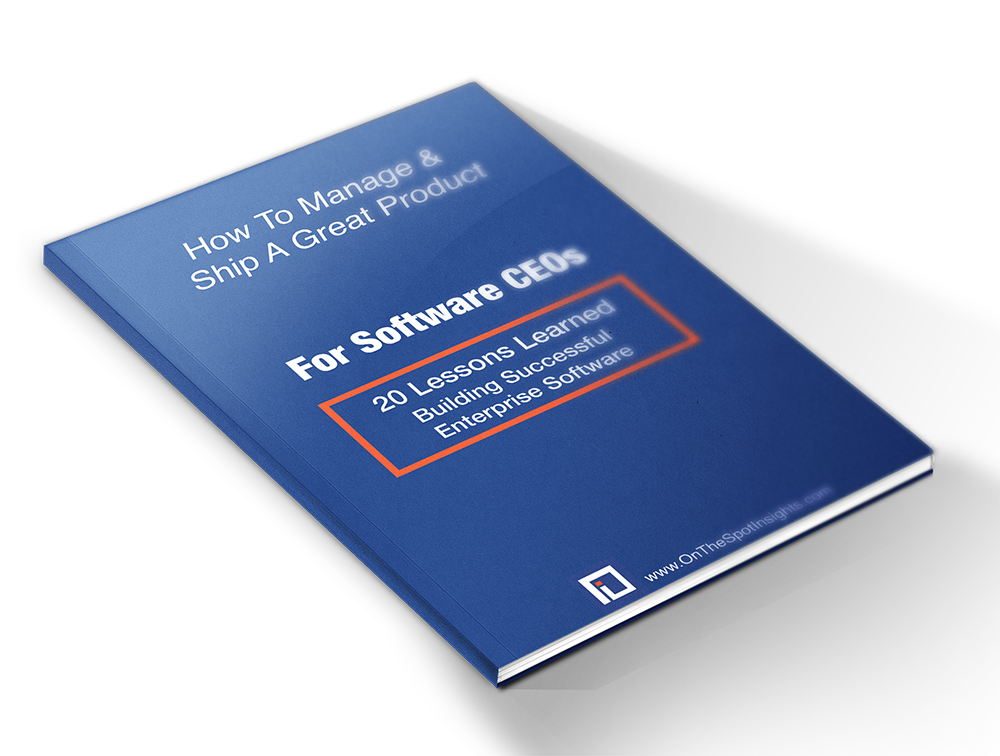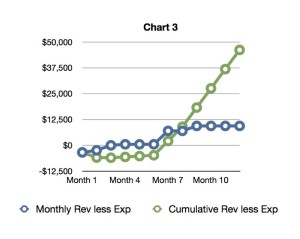How To Take Calculated Risks For Business Growth

Learn How To Manage & Ship A Great Software Product
Get 20 lessons about how Software CEOs can grow their team, improve their culture, and create efficient work processes on the way to building a massively successful Software Company.
This article first appeared as a guest post by this author on the Tresnic Media website.
You’re well into your business year. You’ve had your budget locked down since late last year, and you’ve got a line item for every expenditure: your office space, salaries or consulting fees for people who work for you, utilities, legal, accounting, web design and maintenance, subscriptions, conferences, travel, etc.
Now suppose you’re presented with a special opportunity that promises to bring in some incremental revenue? It’s going to require you to shell out some cash and dedicate some of your time and that of some of your people to make it happen. Where’s the line item in your budget for that? Right. There is none. Does that mean you shouldn’t do it?
You want to see whether it makes sense to go to the bank for a loan or activate a line of credit, and then commit your resources to make it succeed.
Rather than either turn it down because there’s no money for it in the regular or business-as-usual budget or recklessly say “what the heck” and go for it, you ought to have a process for go/no go decisions that’s based on real numbers.
That process must start with comparing revenue projections against expenses allocated to the project. The month in which revenue for that month exceeds expenses for that month is the “turnaround” or “crossover” point. The month in which total revenue to-date exceeds total expenses to-date is the “break even” point.
Here’s how to do it. Prepare a simple spreadsheet with monthly entries for each item of expense and revenue:
- Enter “outside” expenses. If you’re going to be using the services of an outside consultant or vendor, get a solid estimate of their monthly charges. (Ex: Outside programmers are going to charge you $3,000 per month for each month of the year. Enter $3,000 on the line for “Outside Programmers.”)
- Enter “inside” expenses. If you or someone in your firm is going to be working on it, look at the total monthly expense for that employee (compensation plus benefits) and multiply it by the percentage of time that employee will be spending on this initiative for each month. (Ex: You’re going to be involved to the extent of 10% of your time for the first 3 months, then 5% for the other nine months. The company’s monthly expense for you is $15,000. Enter $1,500 on the line for “Owner’s Time” for months 1 – 3 and $750 for each month thereafter. Do the same for each of your other employees who will be involved in the project.)
- Enter assumed revenue. Enter projected revenue for each month of the project. It will probably be zero for the first month or so and then start increasing.
- Create a line for “Revenue Less Expenses.” The totals in this line will be negative for the first few months and then turn positive (“crossover”) in Month 4.
- Create a line for “Cumulative Revenue Less Cumulative Expenses.” These totals will be negative for a longer period but then turn positive (“break-even”) in Month 7.

Then ask the following questions:
- Conditions for success. What industry and environmental conditions would have to exist and, based on what we now know, what is the likelihood of things being that way?
- Work commitment. What specific work would we have to do and are we prepared to do that?
- Optimizing resource allocation. Are there other projects competing for the same resources that you should consider before giving the green light to this one?
With this spreadsheet and the answers to these three questions, you should be able to decide with some conviction whether to move ahead with this project, and to discuss with your accountant or banker.

Learn How To Manage & Ship A Great Software Product
Get 20 lessons about how Software CEOs can grow their team, improve their culture, and create efficient work processes on the way to building a massively successful Software Company.
